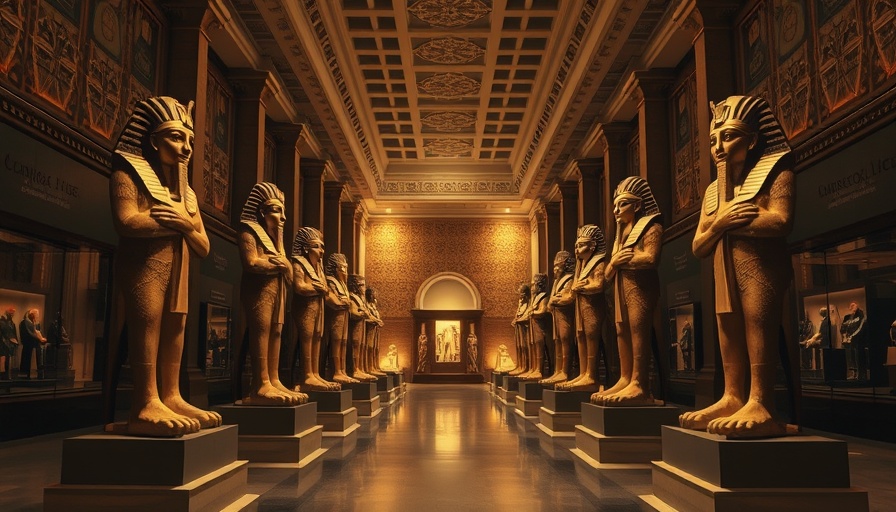
Exploring the Divine Egypt Exhibition at The Met
In an unprecedented display of artistic heritage, the Metropolitan Museum of Art is set to unveil "Divine Egypt," a ground-breaking exhibition that seeks to deepen our understanding of the relationship between ancient Egyptians and their pantheon of gods. Opening on October 12, 2025, the exhibition is the first of its kind in over a decade and aims to illustrate how the images of deities were not merely artistic expressions, but essential aspects of daily worship, connecting the human experience to the divine realm.
Unraveling the Complexities of Ancient Egyptian Deities
The exhibition will showcase over 200 artifacts, ranging from grand statues to intricate figurines, that encompass 25 of the most significant ancient Egyptian gods, such as Horus, Sakhmet, Re, and Osiris. The Met's Director, Max Hollein, emphasizes that these stunning works of art are crucial to understanding the ancient Egyptian worldview. Visitors will discover not just the beauty of the artifacts but also the subtle visual cues—like posture, attire, and symbolic accessories—that convey intricate narratives about the gods and their importance in everyday life.
A Voyage Through Time: From Ancient Shrines to Modern Understanding
Over the span of more than 3,000 years, the belief systems of the Egyptian populace evolved to embrace a complex array of more than 1,500 deities with overlapping traits. As highlighted in the exhibition preview, ancient Egyptians employed these intricate representations to connect with their gods intimately, allowing them to navigate their spiritual lives. Within the exhibition, visitors will find a remarkable array of items, including a solid gold statue of Amun showcased on a divine barque—a symbolic boat designed to carry the principal deity during important festivals.
Accessibility of the Divine: How Egyptians Engaged with Their Gods
The exhibition will explore the diverse accessibility of divine beings in ancient Egypt. While pharaohs and high priests enjoyed privileged access to temples, regular citizens found ways to engage with the deities through personal artifacts, shrines, and offerings. Through these interactions, the exhibition reveals how the average Egyptian sought the favor of gods in their daily lives, highlighting an engaging dichotomy between formal worship and personal devotion.
Connecting the Past to the Present
The significance of understanding such an exhibition goes beyond mere academic interest; it resonates with contemporary audiences by offering insights into how spirituality and art intersect in our lives today. The intricate artistry of these ancient objects speaks to the human spirit, capturing the imagination and reflecting universal themes that transcend time and geography.
Art That Tells a Story
Many highlight pieces of the exhibition will include a striking pectoral rich in gold and lapis lazuli, reflecting the materials that ancient Egyptians believed embodied their deities. Each item tells its unique story, allowing visitors to immerse themselves in the lives of figures like the serene Osiris or the formidable Sakhmet, expanding their understanding of ancient Egyptian belief systems.
As a highlight for both seasoned art enthusiasts and casual visitors alike, "Divine Egypt" ensures to be an unforgettable experience. Expect an array of related educational and public programs, including workshops and talks that will further enrich this experience. Engaging with this history fosters a deeper appreciation for the cultural legacies that shape our world today.
So, if you find yourself in Philadelphia, consider making the trek to New York's Met this fall. Not only can you immerse yourself in the divine, but you can also connect with others who share a passion for the arts and historical narratives that unite us all.
 Add Row
Add Row  Add
Add 




Write A Comment